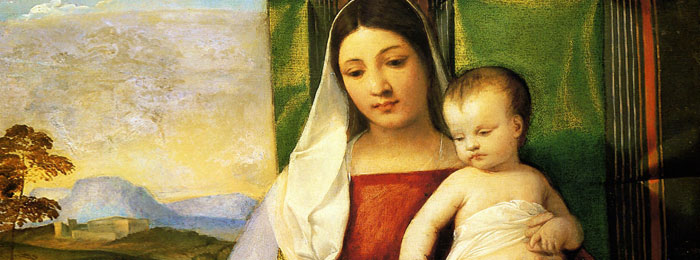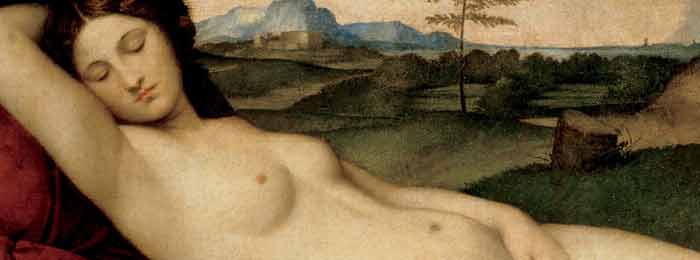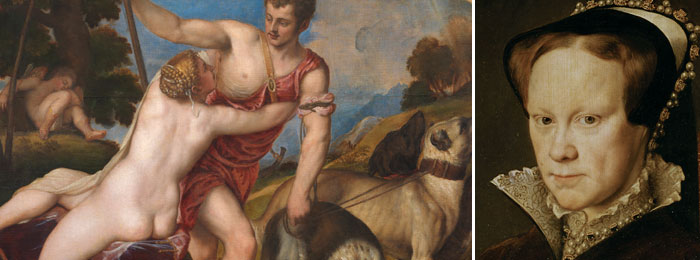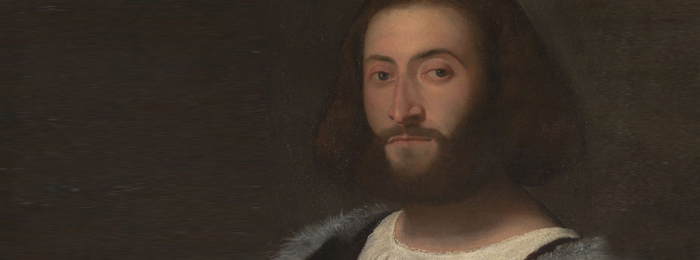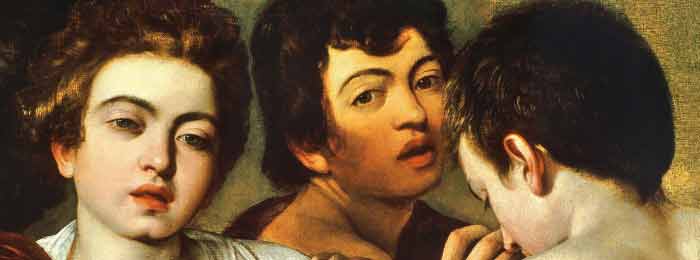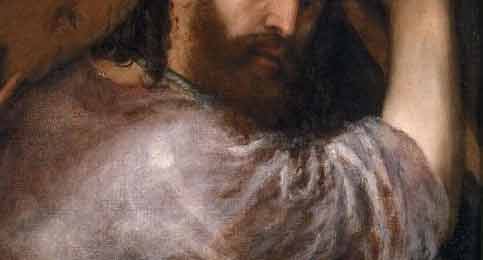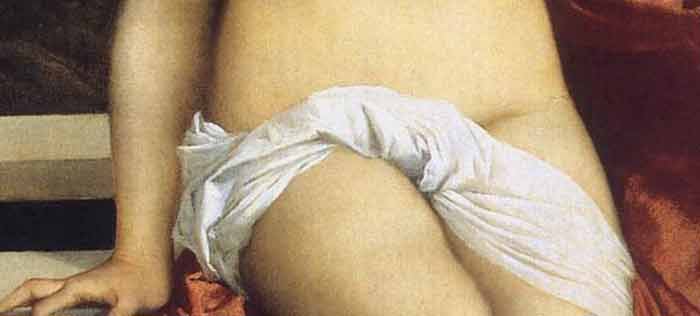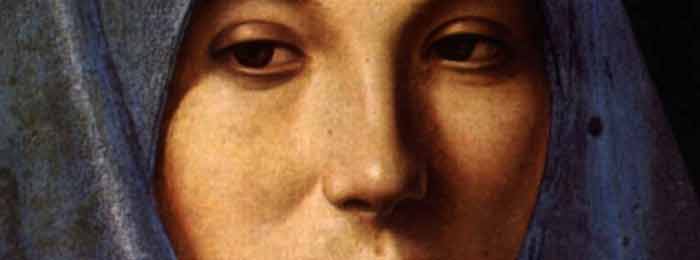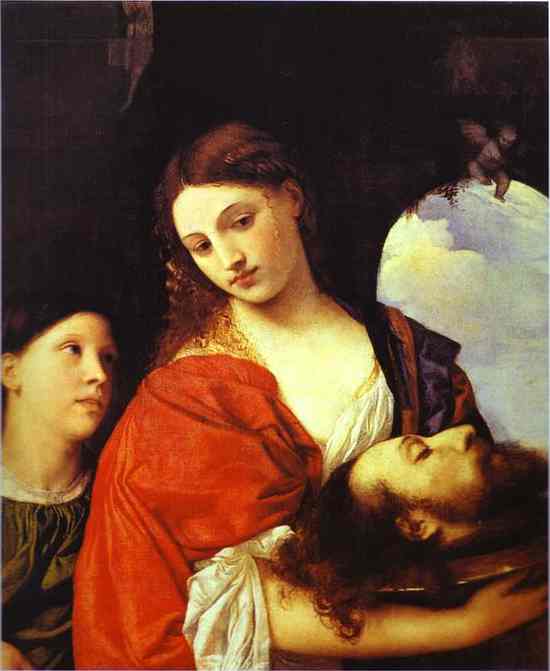On 23 Aug, 2015 With
Oil painting techniques:Titian’s Palette Titian, the greatest Italian Renaissance painter of the Venetian school. He was recognized early in his own lifetime as a supremely great painter, and his reputation has in the intervening centuries never suffered a decline. Titian was one of the most versatile of Italian painters, equally adept with portraits, landscape backgrounds, and mythological and religious subjects. His painting methods, particularly in the application and use of color, would exercise a profound influence not only on painters of the Italian Renaissance, but on future generations of Western art. In 1590 the art theorist Giovanni Lomazzo declared him “the sun amidst small stars not only among the Italians but all the painters of the world.” During the course…
Read More
On 18 Aug, 2015 With
Venetian Painting Techniques The painting techniques employed by Northern Renaissance artists strongly influenced the work of renowned painters, such as Titian and Giorgione, during the Italian Renaissance. Venetian artists also greatly impacted the styles of this period, notably the Van Eyck brothers. The oil painting techniques developed by these Flemish painters around the year 1400 combined the use of egg tempera and oil painting, with the underpainting being created using a grisaille technique of tempera, while pure colored oil glazes were carefully applied on top. This combination painting technique added remarkable lustre to their small panel paintings, resulting in striking jewel-tones, the most vivid hallmark of the brothers’ famous style. Prior to the Van Eyck brothers’ success with their combination…
Read More
On 16 Aug, 2015 With
ELEGANT ANECDOTES about TITIAN AND PHILIP II Titian was not less esteemed by Philip II., than by his father, Charles V. When Philip married Mary, Queen of England, he presented him his famous picture of Venus and Adonis, with the following letter of congratulation, which may be found in Ticozzi’s Life of Titian: “To Philip, King of England, greeting: “Most sacred Majesty! I congratulate your Majesty on the kingdom which God has granted to you; and I accompany my congratulations with the picture of Venus and Adonis, which I hope will be looked upon by you with the favorable eye you are accustomed to cast upon the works of your servant “Titian.” According to Palomino, Philip was sitting on his…
Read More
On 26 Jul, 2015 With
TITIAN’S WORKS.Copies or Originals? The works of Titian, though many of his greatest productions have been destroyed by terrible conflagrations at Venice and Madrid, are numerous, scattered throughout Europe, in all the royal collections, and the most celebrated public galleries, particularly at Venice, Rome, Bologna, Milan, Florence, Vienna, Dresden, Paris, London, and Madrid. The most numerous are portraits, Madonnas, Magdalens, Bacchanals, Venuses, and other mythological subjects, some of which are extremely voluptuous. Two of his grandest and most celebrated works are the Last Supper in the Escurial, and Christ crowned with Thorns at Milan. It is said that the works of Titian, to be appreciated, should be seen at Venice or Madrid, as many claimed to be genuine elsewhere are…
Read More
On 13 Apr, 2015 With
Venetian Painting Technique The Venetian painting technique was developed from many prior classical painting techniques, and is in effect a culmination of the methods that came before it. The approach to Venetian painting outlined below is a modified version that builds on the Renaissance method, incorporating modern chemicals and a contemporary palette. Venetian painting methods rose to prominence in the 17th century, and were used by painters like Titian, Caravaggio, and Velazquez. The most widespread use of these techniques was witnessed during the Baroque period, and they are ideal for still life painting, portraiture, and compositions that use strong, single-source lighting. The Technique– 1. The first step to creating this type of painting is a basic underdrawing which records the…
Read More
On 1 Jul, 2014 With
“Glazing” in relation to the Venetian Method refers to the application of a darker transparent paint over a lighter area. Doing so causes light rays to pass through a transparent darker layer, bouncing off the lighter surface underneath, then returning to the viewer’s eyes, and was useful in creating subtle optical illusions. Only the Renaissance practice of glazing can produce this particular effect, one which results in the look of a warm glow and more saturated colours than the same pigment could achieve if applied more thickly and opaquely. Modern methods, with their more opaque results, lose a sense of distance when one is looking at shadows. Rembrandt’s glowing and rich dark browns owe their origins to this Venetian…
Read More
On 24 Jun, 2014 With
Titian and Giorgione were foremost among the pioneers of what we now call the Venetian Method of oil painting. The Venetian Method, or Venetian Technique, borrowed heavily from the Flemish Method, which saw the application of transparent glazes for the shadows, greater contrast between dark and light areas, and opaque highlights. The Venetian Method, however, deviates in some key areas, adding its own take on the Flemish process. While the glossy finish of the Flemish Method was ideal for small wood panels, on large paintings it was distracting and decidedly “overkill”; ergo, Titian refined the painting process to produce a less reflective surface. Most probably, he cut out sheen-enhancers like polymerized oils, balsams, and resins, and replaced them with…
Read More
On 17 Jun, 2014 With
Oil painting in its first form evolved from an earlier discipline known as , and was an attempt to overcome the severe limitations of that medium, such as a lacklustre finish and too-rapid drying time. Developed originally in Flanders, the method became known as the “Flemish Technique.” This method of painting requires a rigid surface on which to work, one that has been primed pure white, as well as a very precise line drawing. The line drawing was transferred to the white surface by perforating (tracing, in essence) the drawing along its lines. Once this transfer was complete, the resulting lines were enhanced with ink or viscous paint (using either a pen or finely pointed sable brush). The drawing was…
Read More
On 27 Jan, 2011 With
Classical painting techniques – Sfumato Sfumato is one of the four canonical painting modes of the Renaissance (the other three being Cangiante, Chiaroscuro, and Unione). It corresponds to the concept of ‘low-contrast’ in photography. The Italian word sfumato (pp. of sfumare, ‘to vanish’ or ‘to shade’) captures the idea precisely. The finished product appears as though a veil of smoke had drifted between the subject of the painting and the viewer, adding some brightness to the pure darks and blocking some of the pure brights of the subject. It is not a difficult technique in practice. It requires competence in brushwork and judgement of value (brightness) but does not necessarily require a high degree of skill. It consists in painting…
Read More
On 5 Dec, 2010 With
This work was afterwards destroyed by fire, but the composition has been preserved by the burin of Fontana. His next performance was his celebrated picture of St. Pietro Martire, in the church of SS. Giovanni e Paolo, at Venice, which is generally regarded as his master-piece in historical paint[Pg 3]ing. This picture was carried to Paris by the French, and subsequently restored by the Allies. Notwithstanding the importance of these and other commissions, and the great reputation he had acquired, it is said, though with little probability of truth, that he received such a small remuneration for his works, that he was in actual indigence in 1530, when the praises bestowed upon him in the writings of his friend Pietro…
Read More


